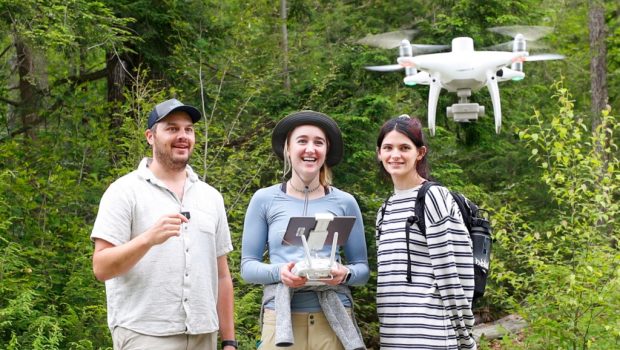GIS Center for Interdisciplinary Research using geospatial technology to map spongy moth – Saratogian
SARATOGA SPRINGS, N.Y. — A faculty-student summer research team at Skidmore College has been using GIS (geographic information systems), satellite imagery and data collection in the field to study the impact of the spongy moth – formerly known as the gypsy moth – in the region.
Charlie Bettigole, director of Skidmore’s GIS Center for Interdisciplinary Research, and summer research assistants Avery Blake and Morgan Foster, both rising seniors at Skidmore, have been focusing their research this summer on trees in local woods and in the Lake George Watershed.
“The insect is a little bit mysterious; it booms and busts. It can appear out of nowhere and then disappear the following year,” Bettigole said in a press release. “So we’re hoping to gain a little bit more of an understanding because of how intense this outbreak is in our backyard.”
Among the questions, they’re endeavoring to answer: Why do moths prefer some types of trees, forest, and landscapes over others? And in the areas hit hardest by the spongy moth year after year, what kind of tree mortality rate impacts overall landscape health?
“A big thing we have come across time and time again is that more diverse forest landscapes are a lot more resilient to defoliation,” said Foster, a political science major at Skidmore, in the release. Research has shown that multiple years of defoliation (loss of leaves), paired with other environmental stressors, can lead to widespread forest decline.
With that in mind, the summer research team has set out to use GIS and remote sensing to gain a better understanding of how outbreaks have shifted and grown over time and to create a predictive model of what such an event could look like next year.
“Ideally, this research will give people a head start in the future when the boom does come again because it comes every 10 to 15 years. We’re in that cycle right now,” said Blake, a geosciences major, in the release. “Usually it’s mitigated after two to five years, so hopefully it’s not as bad next year. But if it is, hopefully, this research can be used to stop the spread.”
This GIS Center-led investigation into spongy moth patterns began in summer of 2021 when the Lake George Watershed and other parts of the southern Adirondacks saw an unprecedented defoliation event. In the Lake George Watershed alone, about 16% of the total land area was impacted.
“We were out doing work on Dome Island in the middle of Lake George, inventorying forests and soils, and we looked around and noticed that instead of looking like the middle of the summer, it was looking more like late fall,” Bettigole recalled in the release. “So we took a step back and decided to do a survey of sites that had been defoliated by these moths.”
Blake and Foster are among the students who have been out in the field, visually assessing the impact of the moths, collecting species information, counting, measuring, surveying trees, and observing individual tree health. They have been revisiting all the sites tracked by Skidmore researchers in 2021 and adding hemispheric and satellite imagery from various sources to their data collection.
“We’re able to look at, almost in real-time, the patterns of this defoliation unfolding, because it’s so stark from space,” Bettigole said in the release of the utility of satellite imagery. “Some places are affected year after year, but more often patterns change.”
At Skidmore, the GIS Center for Interdisciplinary Research is educating students from a wide variety of majors about the many ways in which geospatial technology – and access to extensive catalogs of data and resources – can enhance their studies and research pursuits and add to their skillsets as they prepare to embark on careers.








Gloss